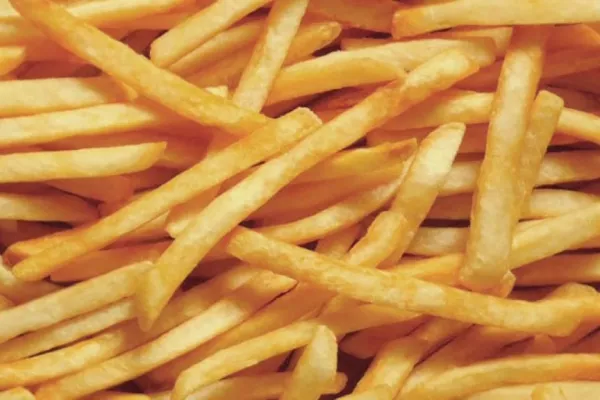Partially hydrogenated oils, the main source of artificial trans fat and an invisible mainstay of the American food industry for decades, are finally being pushed out in favour of healthier alternatives.
The change was a long time coming. Research showing the dangers of trans fat, which raises the risk of heart disease and stroke, solidified with a major study published in 1990 and got stronger with each successive round of research, forcing food makers to start looking for alternatives. From 2006 to 2008, according to one estimate, the amount of PHOs in food in North America was cut in half. By 2015, the Grocery Manufacturers Association said trans fat had been reduced by 85 percent. That year, the U.S. Food and Drug Administration announced that food makers had three years to completely remove the oils from their products.
PHOs come in many forms and serve a variety of hidden functions. They could be in the deep fryer at a national fast-food chain or in your favorite packaged baked goods—you know, the ones that tastes as fresh today as when they were purchased three years ago. They’ve shown up in creamers, cereal bars and microwave popcorn. Replacing them requires a mix of liquid oils and solid fats, along with collaboration among oil-producers, fast-food industry and packaged food producers.
Consumers likely won’t be able to tell the difference when they sample the new generation of PHO-free products. In fact, many have already been eating them for years. Nutritionally, all are an improvement over standard partially hydrogenated soybean oil. Producers tout their high content of “good fats,” (aka monounsaturated and polyunsaturated fats) and low levels of “bad fats” (trans and saturated fats). Omega-9 fatty acids, or oleic acid, makes the oil both more stable and healthful. (The high oleic acid content of olive oil is one reason it is considered the gold standard of healthy oils.) Yet these oils fall short in at least one respect: Because all the new oils are liquid, baking with them requires the addition of other solid fats. In these cases, palm oil, an ingredient associated with negative environmental impacts, is often the solid fat of choice.
Non-GMO Omega-9 canola oil, from Dow Chemical Co.’s Dow AgroSciences LLC, has even lower levels of saturated fats than olive oil and about the same level of omega-9s. “This oil has the whole package,” said Dave Dzisiak, the global business leader of oils and grains at the company. The oil also has a cleaner, light taste, he said. It’s currently being used by major national and regional foodservice chains, as well as by snack makers, according to the company.
DuPont Co.’s DuPont Pioneer subsidiary makes similar claims about its trans-fat free oil, Plenish. Through genetic modification, the company lowered the amount of saturated fat in standard soybean oil by 20 percent and raised the omega-9 fatty acids to rival that of olive oil. Plenish is also currently being used in packaged goods, according to DuPont. It believes its soy oil holds a competitive advantage over canola because soy is so entrenched in the American diet. “There’s a pretty strong belief that the U.S. consumer in particular has developed a preference for soy,” said Russ Sanders, director of food at DuPont. “The flavor of the food comes through more than the flavor of the oil.”
Monsanto Co. is banking on the same preference as it prepares to launch its own soybean oil, Vistive Gold. Like its competitors, Vistive Gold has a high omega-9 count, low saturated fat content and better stability than standard soybean oil. It is also a product of genetic engineering. The company declined to name any specific customers, but a spokesperson said it has been working closely with the food industry to develop an oil producers will want to use.
At the moment, high-oleic canola oils are more popular, largely because they have been around in commercial quantities much longer than the new soybean oils, said Robert Collete, president of the Institute of Shortening and Edible Oils. (High-oleic sunflower oils have also been available for some time in lower quantities.) But the soybean industry is fighting back with Qualisoy, an organization that promotes high-oleic soybean oil, including Plenish and Vistive Gold.
The nutritional profile of the new soybean oils is also more favorable than that of the new canola oils, said J. Thomas Brenna, professor of Human Nutrition at the Dell Medical School at the University of Texas-Austin. While omega-9 fatty acids are important, omega-3s and omega-6s—found in the aforementioned polyunsaturated fats—are as well, and they need to be in the right balance with each other. But, Brenna said, the omega-3s in the canola oil were reduced below an ideal level to make room for the omega-9s. That makes it less healthy than the soybean oils, which keep their polyunsaturated fat ratios more aligned with olive oil.
Of course, all of these options are still far better than the partially hydrogenated oils of yore. “That is bad stuff,” said Brenna.
For people hoping that the new, trans fat-free world means they can eat as many French fries and potato chips as they want, Keri Gans, a New York-based registered dietitian, has some bad news. “Just because a company has switched their oil to a healthier variety,” she said, “doesn't mean the product becomes good for you.”
The old rules of diet still apply. “Watch the amount of French fries you eat,” Gans warned.
News by Bloomberg - edited by Hospitality Ireland








